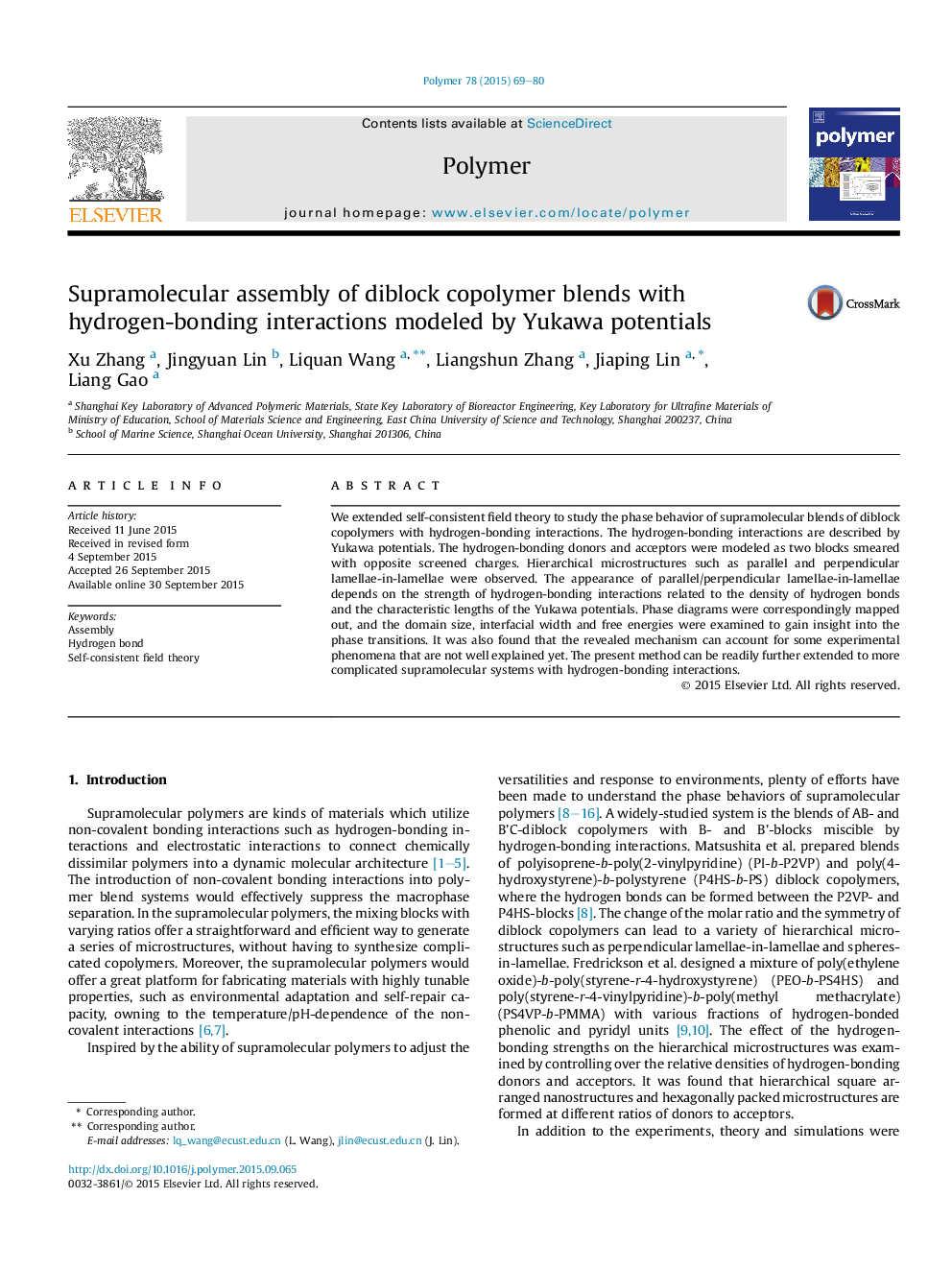| Article ID | Journal | Published Year | Pages | File Type |
|---|---|---|---|---|
| 5179976 | Polymer | 2015 | 12 Pages |
â¢Self-consistent field theory with Yukawa potentials is developed.â¢Parallel-to-perpendicular lamellae-in-lamellae transition is predicted.â¢Observation of tetragonal-to-hexagonal cylinder transition is successfully explained.
We extended self-consistent field theory to study the phase behavior of supramolecular blends of diblock copolymers with hydrogen-bonding interactions. The hydrogen-bonding interactions are described by Yukawa potentials. The hydrogen-bonding donors and acceptors were modeled as two blocks smeared with opposite screened charges. Hierarchical microstructures such as parallel and perpendicular lamellae-in-lamellae were observed. The appearance of parallel/perpendicular lamellae-in-lamellae depends on the strength of hydrogen-bonding interactions related to the density of hydrogen bonds and the characteristic lengths of the Yukawa potentials. Phase diagrams were correspondingly mapped out, and the domain size, interfacial width and free energies were examined to gain insight into the phase transitions. It was also found that the revealed mechanism can account for some experimental phenomena that are not well explained yet. The present method can be readily further extended to more complicated supramolecular systems with hydrogen-bonding interactions.
Graphical abstractA self-consistent field theory was developed to study the phase behavior of supramolecular blends of diblock copolymers with hydrogen-bonding interactions, and the phase transitions such as parallel-to-perpendicular lamellae-in-lamellae transition were predicted.Download high-res image (326KB)Download full-size image
